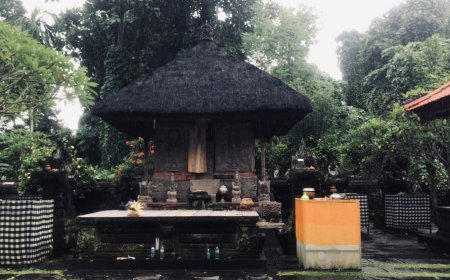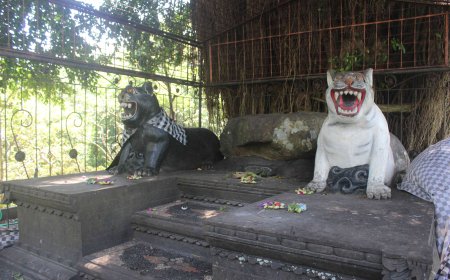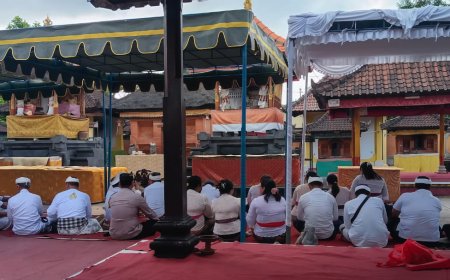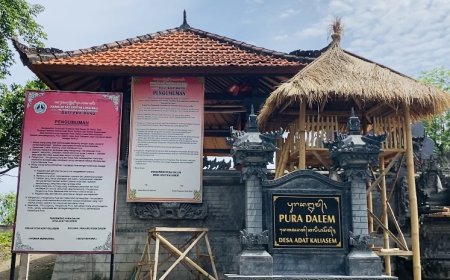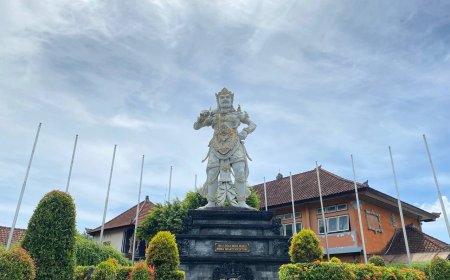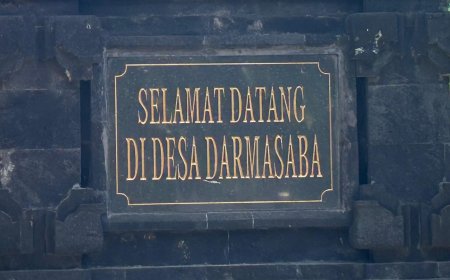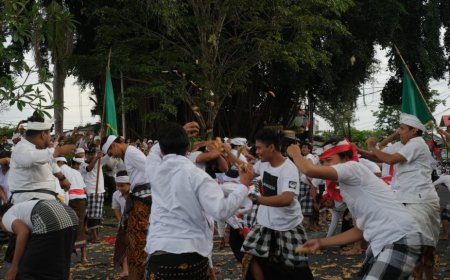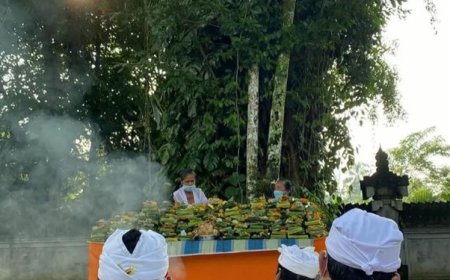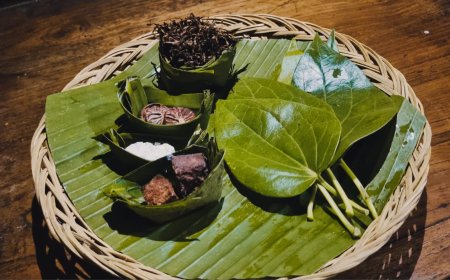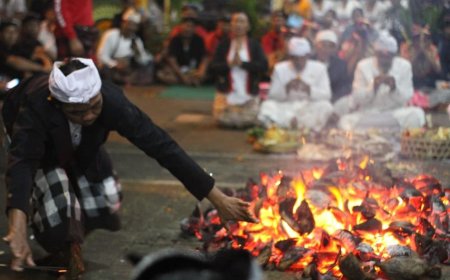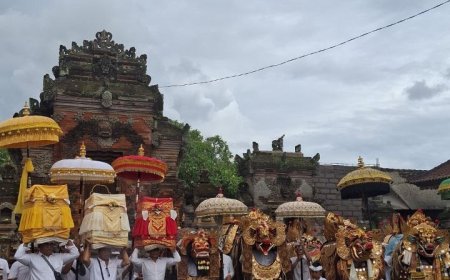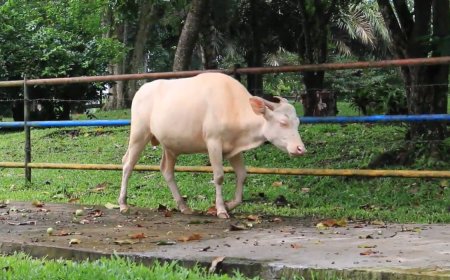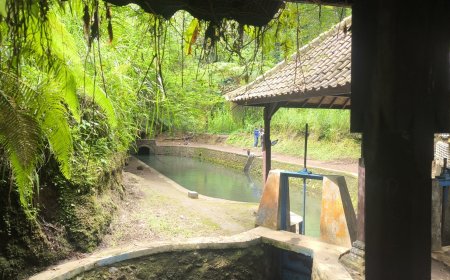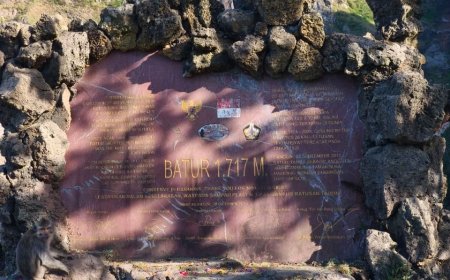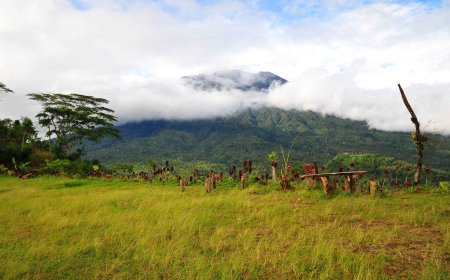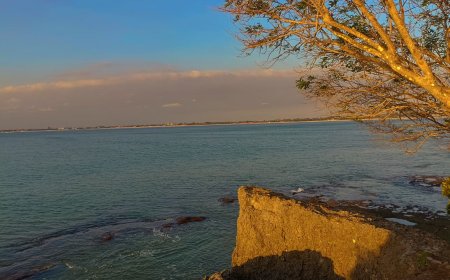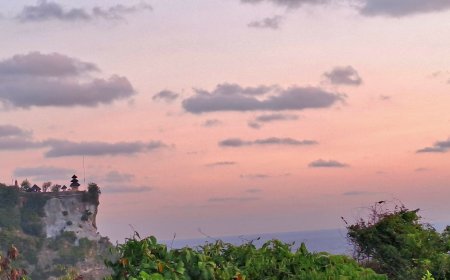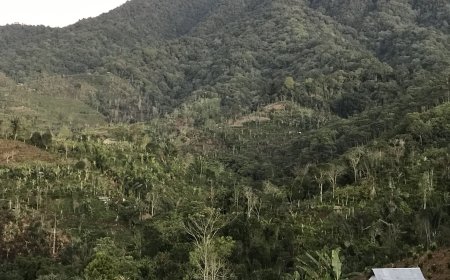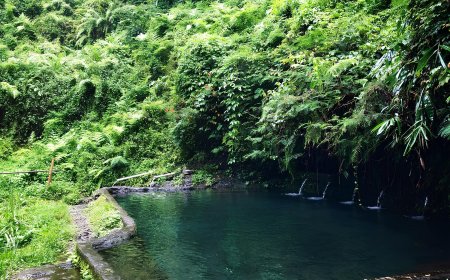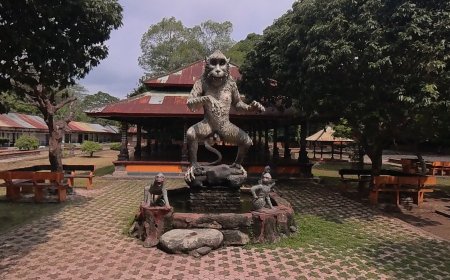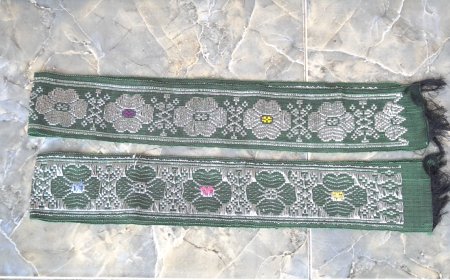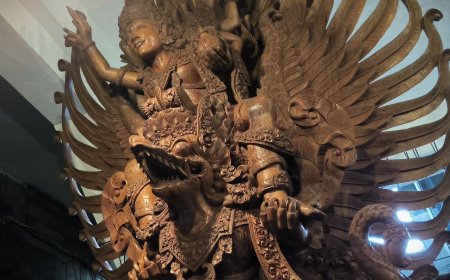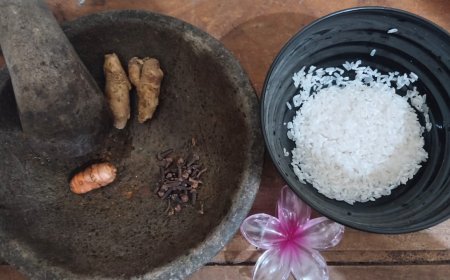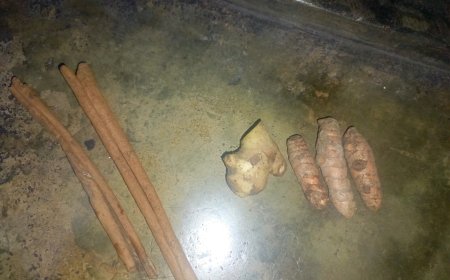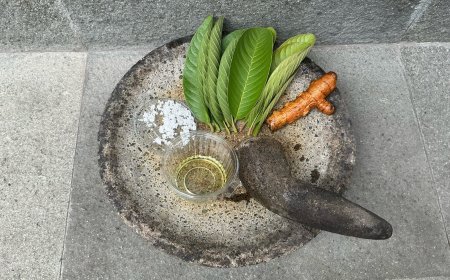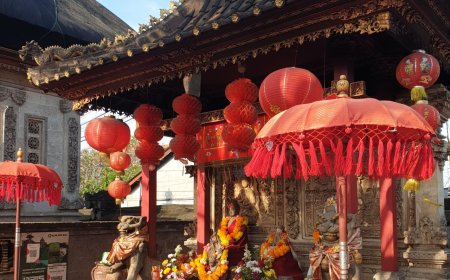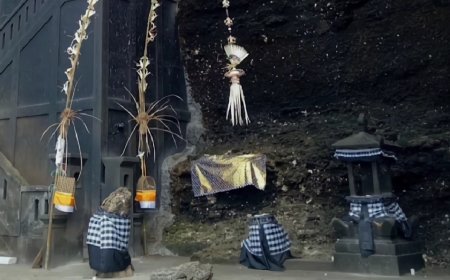Unveiling the Sacredness of Pura Luhur Batubelig: The Slippery Stone, Khayangan Gunung Kereban, and the Eternal Ancestral Legacy in Tabanan Regency
Pura Luhur Batubelig is not merely a holy place, but also a silent witness to the long history of the Tabanan kingdom. Designated as a cultural heritage site in 2022, this temple preserves stories of spirituality, warfare, and ancestral journeys that are still safeguarded today.”
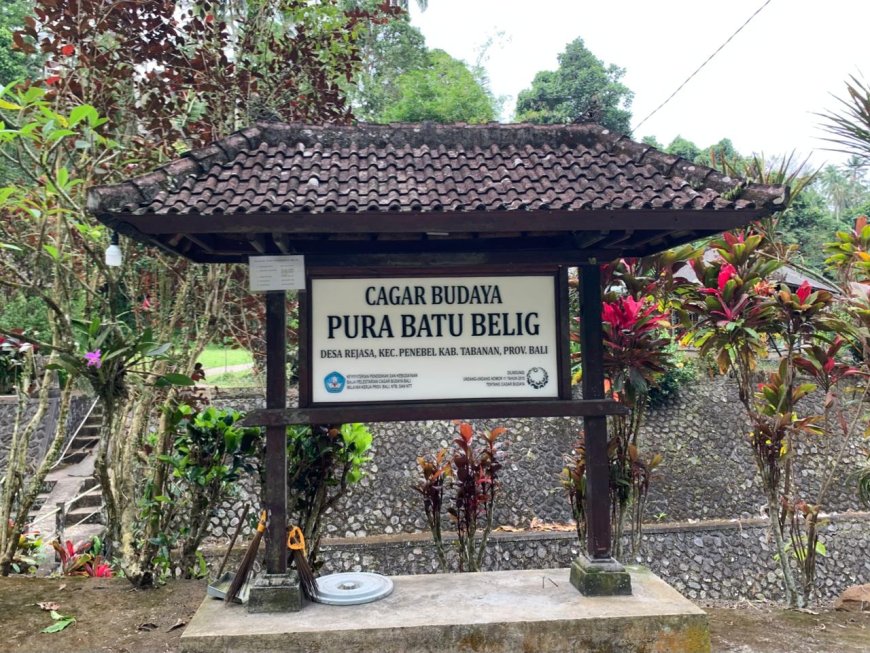
Bali is widely known as the Island of a Thousand Temples, and among its many sacred sites, Pura Luhur Batubelig holds a distinctive spiritual and historical appeal. Located at the foot of Mount Batukaru in Rejasa Village, Penebel District, Tabanan Regency, the temple is marked by its main shrine an enormous slippery stone covered in moss. This unique feature gave rise to its name: Batu means stone, and Belig in Balinese means slippery. For generations, this stone has been believed to contain sacred powers and has served as the focal point of Hindu worship.
The history of Pura Luhur Batubelig is closely tied to the dynamics of the Tabanan kingdom in the 17th century. At that time, a major conflict broke out between Cokorde Tabanan and Cokorde Penebel. The war, which took place around 1615–1618 AD, resulted in many casualties, the destruction of palaces, and the displacement of nobles and their followers to various regions. One prominent figure was Ki Ngurah Made Oka, a descendant of Tabanan nobility, who later undertook ascetic meditation (tapa-yoga) in a forest called Pesagi.
Pelinggih Ageng Batubelig, a moss-covered slippery stone believed to radiate sacred energy, has served as the center of worship since ancestral times (Source: Personal Collection)
In his meditation, he discovered a large slippery stone covered with moss, emitting a spiritual sign in the form of fire rising from the earth. From this event was born a temple called Khayangan Batubelig, or Pura Luhur Batubelig, which later came to be regarded as a Khayangan Jagat a sacred place for all Hindus, regardless of lineage or region.
Pura Luhur Batubelig holds profound spiritual meaning. Its existence symbolizes purity, steadfastness, and the connection between humans and Sang Hyang Widhi. In addition, the temple is also related to Khayangan Gunung Kereban, located in the same area. The two are likened to two sides of a coin that cannot be separated, forming a spiritual unity in maintaining harmony between nature and life. This meaning is in line with the philosophy of Tri Hita Karana, which emphasizes maintaining harmonious relationships between humans and God (Parahyangan), with fellow humans (Pawongan), and with nature (Palemahan).
Prangkeng of Pura Batubelig, which collapsed in 2013, preserved within the temple as a silent witness to the long journey of ancestral heritage (Source: Personal Collection)
Pura Luhur Batubelig has a number of ancient shrines, most of which are still in their original stone form. Each shrine not only serves as a place of worship but also holds symbols that reflect the relationship between humans, ancestors, nature, and Sang Hyang Widhi.
· Pelinggih Ageng Batubelig
This is the main shrine of the temple, a large moss-covered slippery stone. It is believed to be a point of sacred energy as well as the icon that gave birth to the name “Batubelig.” Its presence reminds devotees of the power of nature as a medium of worship.
· Pelinggih Taksu
A place where devotees seek blessings of intelligence, charisma, and spiritual clarity. For the Balinese, taksu is a divine gift that grants respect and authority in one’s work.
· The Four Perangkeng Shrines
A series of stone shrines embedded in the ground, believed to symbolize the guardians of the temple’s sanctity. One of them collapsed in 2013, but its remains are still preserved within the temple as a historical marker.
· Pelinggih Sang Hyang Maling
Unique for its name, this shrine symbolizes mystical powers that guard the temple grounds from theft or negative disturbances. It represents protection and spiritual security.
· Pesimpangan Tamba Waras
Associated with healing. In the past, it was believed to be a place to seek health and recovery. Today, the shrine has been rebuilt in a new form while preserving its original meaning.
· Pesimpangan Muncak Sari
Dedicated to fertility. Here, devotees pray for the earth’s continued fertility, healthy crops, and abundant harvests.
· Pesimpangan Batukaru
A spiritual link to Pura Luhur Batukaru in the mountains, demonstrating the interconnectedness of temples across Bali.
· Meru Tumpang 3 (now Meru Tumpang 1)
Formerly the seat of Ida Bhatara Kawitan of Puri Oka Tabanan, the ancestor of the Tabanan nobility. Following ancestral guidance, it was later simplified into a Meru Tumpang 1.
· Menhir (Krinan)
A standing stone shrine, reminding us of Bali’s ancient megalithic traditions that continue to this day.
· Pesimpangan Rambut Siwi and Jero Bangbang
Now placed within the same complex, Rambut Siwi above and Jero Bangbang below. The latter once served as a sacred site of pralina (ritual dissolution).
· Pelinggih Lingga Dukuh Sakti
This shrine has long stood independently and is seen as a symbol of power and eternity.
· Pelinggih Ratu Wayan, Ratu Nyoman, and Ratu Made
Symbolizing ancestral guardianship across three main generations. Their presence reflects the community’s deep respect for ancestral lineage.
The diversity of these shrines makes Pura Luhur Batubelig appear as a living encyclopedia of Balinese spirituality. Every corner of the temple embodies meaning from protection, wisdom, healing, and fertility, to reverence for ancestors.
Front view of Pura Gunung Kereban, a sacred temple standing alongside Pura Luhur Batubelig, inseparable in preserving the harmony of the universe (Source: Personal Collection)
Pura Luhur Batubelig has a close connection with Khayangan Gunung Kereban, both located at the foothills of Mount Batukaru. The two temples are inseparable as they complement each other, both historically and spiritually. In local tradition, they are regarded as one entity of Khayangan Jagat, a sacred temple open to all Hindus.
This relationship is reflected in ceremonies and shrine maintenance carried out in unison, so Pura Batubelig and Gunung Kereban are always mentioned together. This unity reinforces the idea that the ancestral heritage in Tabanan is not only about physical structures but also about a spiritual network that maintains balance between humans, nature, and Ida Sang Hyang Widhi.
Official document of the designation of Pura Luhur Batubelig as a Cultural Heritage Site in 2022 by the Government of Tabanan Regency, serving as proof of the temple’s historical and spiritual significance (Source: Personal Collection)
On June 2, 2022, the Tabanan Regency Government officially designated Pura Luhur Batubelig as a Cultural Heritage Site. This recognition affirms the importance of the temple from both historical and spiritual perspectives. With this status, its management is better ensured, and preservation efforts can be carried out sustainably by the traditional village in cooperation with the government.
Pura Luhur Batubelig is not only a place of worship but also a historical site rich in philosophical and spiritual values. The preserved ancient shrines are tangible evidence of the long journey of civilization in Tabanan. With its designation as a cultural heritage site, Pura Luhur Batubelig is increasingly recognized as an important legacy that must be preserved. For the Balinese people, especially in Tabanan, this temple is a sacred symbol, a center of togetherness, and a bridge to maintain harmony between humans, nature, and Sang Hyang Widhi.
